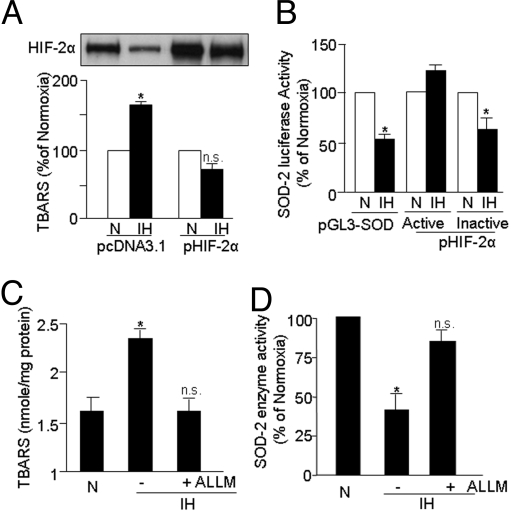Fig. 5.
Down-regulation of HIF-2α contributes to IH-induced oxidative stress as a result of decreased SOD2 promoter trans-activation and enzyme activity. (A) Over-expression of HIF-2α prevents IH-evoked oxidative stress and HIF-2α down-regulation in PC12 cells. TBARS levels were monitored as an index of oxidative stress in cells transiently transfected with an empty vector (pCDNA3.1; control) or pHIF-2α plasmid, and then exposed to normoxia (N) or to IH60. (B) Transcriptionally active HIF-2α prevents IH-induced inhibition of SOD2 promoter activity. SOD2 promoter activity was determined in PC12 cells transiently transfected with the reporter plasmid pGL3-SOD-Luciferase and co-transfected with pIRES-WT HIF2 (transcriptionally active) and pIRES-IA HIF2 (transcriptionally inactive) expression plasmids. Cells were exposed to normoxia (N) or IH60 and SOD2 promoter activity was determined by luciferase activity in cell lysates. (C and D) Treatment of cells with the calpain inhibitor ALLM (10 μM) prevents the IH60-evoked increase in TBARS (index of oxidative stress) as well as the decrease in SOD2 enzyme activity. Control cells were exposed to normoxia (N). Data presented are mean ± SEM. from 3 to 5 experiments. *P < 0.05; n.s., not significant, P > 0.05.

